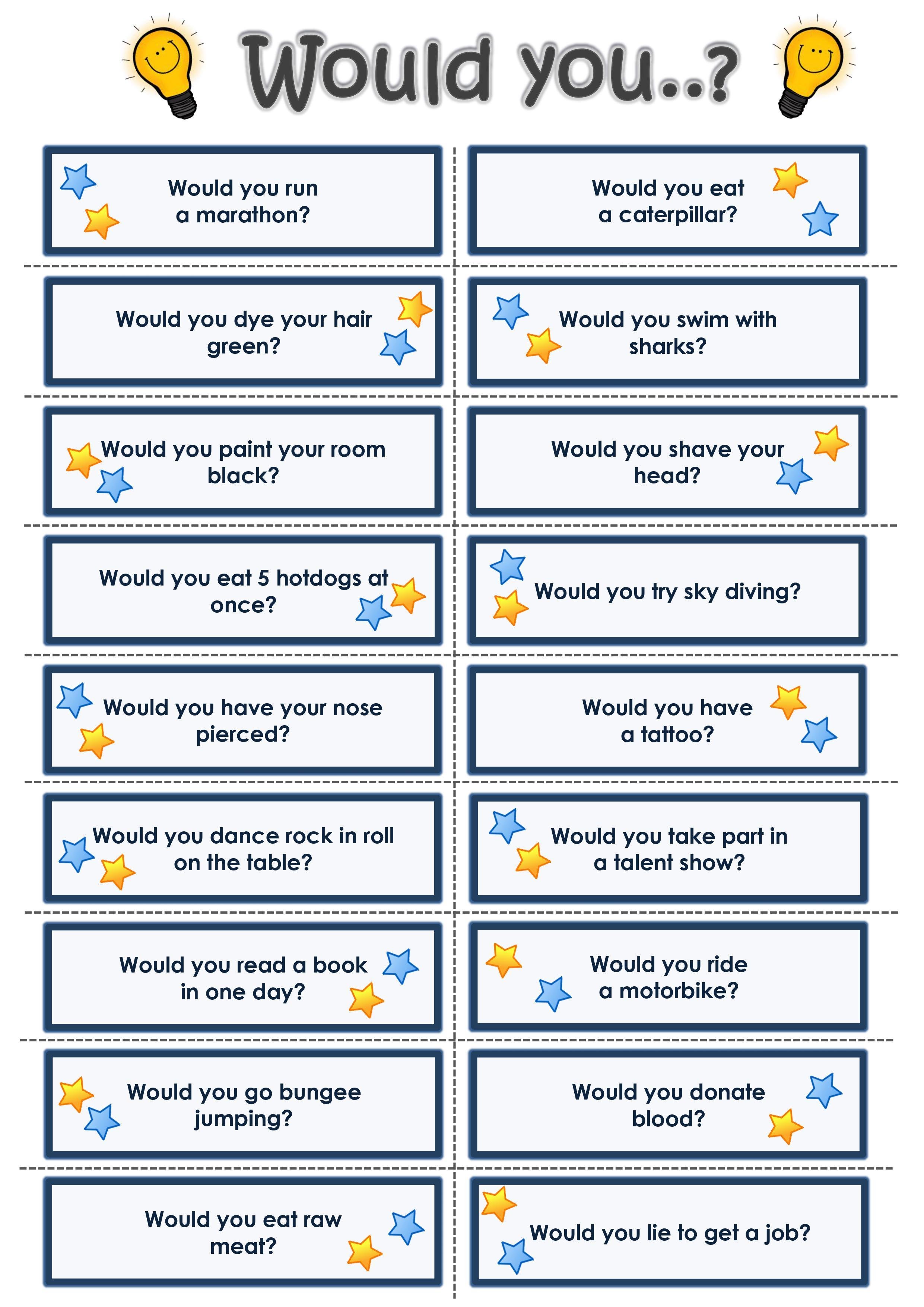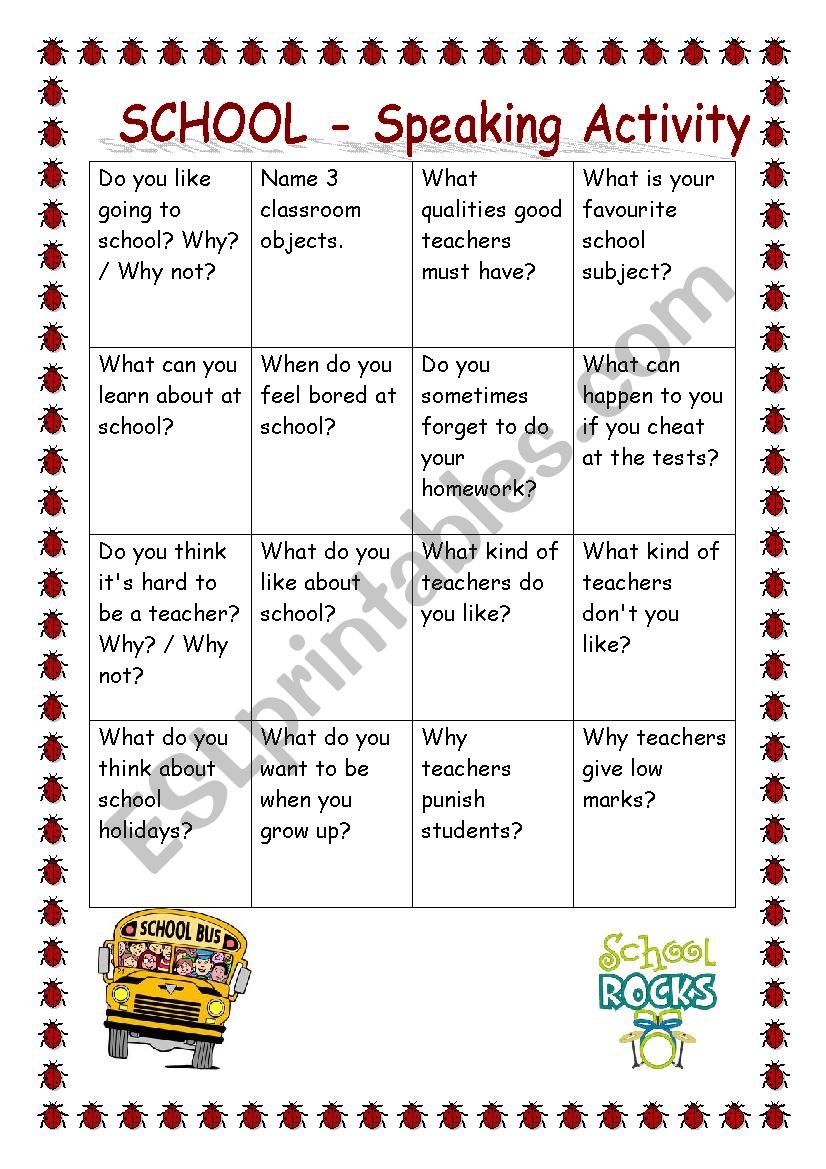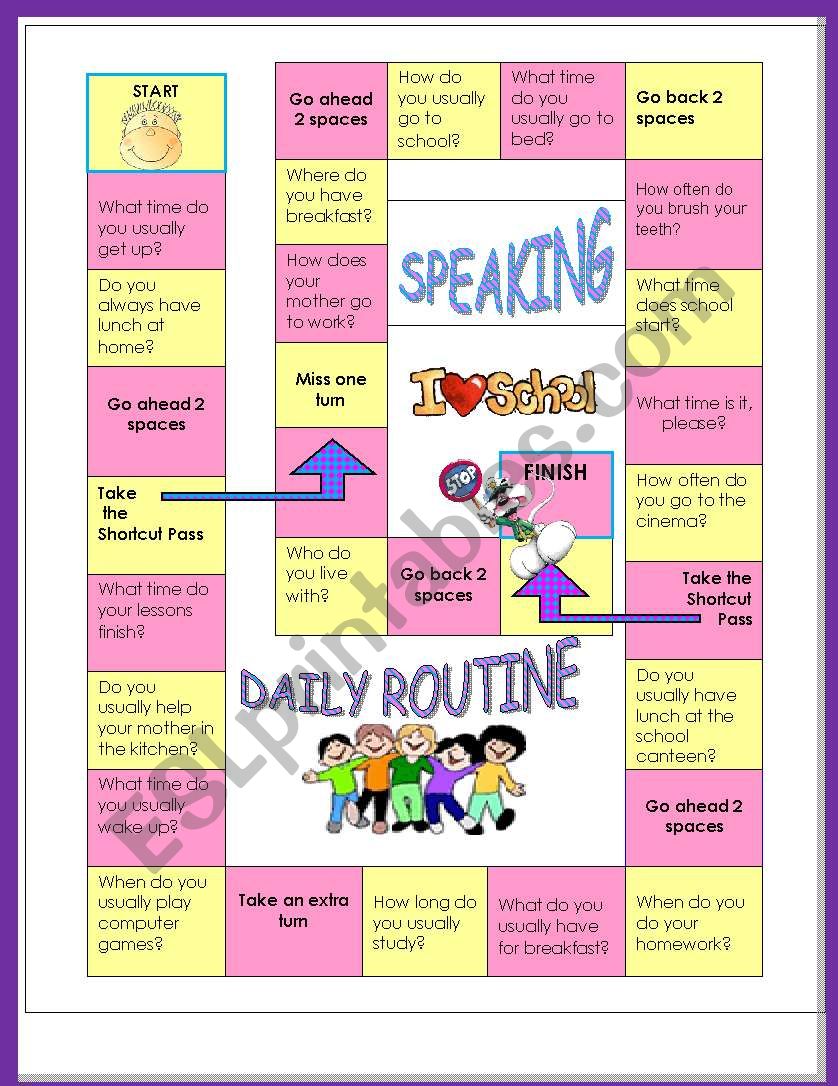
Speaking Prompts for ESL Worksheets: Igniting Conversational Fluency
In the journey of mastering a new language, listening, reading, and writing are undoubtedly crucial, but the ultimate goal for most learners is to speak fluently and confidently. However, for many English as a Second Language (ESL) students, speaking can be the most intimidating skill to develop. The fear of making mistakes, the lack of immediate vocabulary, and the pressure of real-time communication can often lead to silence or hesitation. This is where the strategic implementation of speaking prompts for ESL worksheets becomes invaluable. These carefully designed prompts provide a structured yet flexible framework for learners to practice their spoken English in a supportive environment, gradually building confidence and conversational fluency.
This article will delve into the profound importance of speaking prompts, explore various types suitable for ESL worksheets, discuss effective strategies for integrating them into the curriculum, and offer practical tips for educators aiming to maximize their impact.

The Undeniable Importance of Speaking Prompts

Speaking prompts for ESL worksheets serve as catalysts for authentic communication, offering numerous benefits that extend beyond mere vocabulary recall.

- Overcoming Speaking Anxiety: One of the primary barriers for ESL learners is anxiety. Prompts provide a low-stakes opportunity to practice, reducing the pressure of spontaneous conversation. Learners know what to expect and can mentally prepare, making the act of speaking less daunting.
- Building Confidence: Success in even small speaking tasks contributes significantly to a learner’s confidence. As they successfully articulate their thoughts, their self-belief grows, encouraging them to participate more actively.
- Developing Fluency and Accuracy: Regular practice with diverse prompts helps learners develop automaticity in their speech. They begin to access vocabulary and grammatical structures more quickly, moving from conscious construction to more natural expression. While fluency focuses on smooth delivery, accuracy ensures correct language usage, and prompts can be tailored to target both.
- Expanding Vocabulary and Grammar in Context: Prompts force learners to activate their existing vocabulary and grammar knowledge, and often, to acquire new words or structures relevant to the topic. Unlike rote memorization, using language in a meaningful context makes it more memorable and applicable.
- Encouraging Critical Thinking and Creativity: Many prompts require learners to express opinions, solve problems, or tell stories. This encourages higher-order thinking skills, as they must organize their thoughts, articulate arguments, and use descriptive language.
- Providing Structured Practice: Unlike unstructured conversation, prompts offer a specific focus. This allows teachers to target particular linguistic areas (e.g., past tense, conditional clauses, descriptive adjectives) or communicative functions (e.g., agreeing/disagreeing, giving advice, narrating).
- Facilitating Peer Interaction: When used in pair or group work, prompts encourage peer-to-peer interaction, simulating real-life conversations and allowing learners to practice both speaking and active listening skills.




Characteristics of Effective Speaking Prompts
Not all prompts are created equal. To be truly effective, speaking prompts for ESL worksheets should possess certain qualities:

- Relevance: Prompts should relate to learners’ lives, interests, or current events. When topics are engaging, learners are more motivated to speak.
- Appropriate Difficulty: They must be challenging enough to encourage growth but not so difficult as to cause frustration. Consider the learners’ proficiency level, vocabulary range, and grammatical knowledge.
- Open-endedness: Prompts that elicit more than a "yes" or "no" answer are ideal. They encourage elaboration, explanation, and deeper discussion.
- Clear Instructions: Learners should understand exactly what they are expected to do. Vague instructions can lead to confusion and silence.
- Variety: Mixing different types of prompts keeps learners engaged and allows them to practice various communicative functions.

Diverse Types of Speaking Prompts for ESL Worksheets
The versatility of speaking prompts allows for a wide range of activities suitable for different levels and learning objectives. Here are several effective types:
-
Personal Experience/Opinion Prompts: These are excellent for beginners as they draw on learners’ existing knowledge and experiences, making them feel more comfortable sharing.
- Examples: "Describe your favorite holiday and why you enjoyed it." "What’s one thing you would change about your hometown?" "Do you prefer reading books or watching movies? Explain why."
- Benefits: Low-pressure, relatable, encourages personal expression.
-
Hypothetical Situations: These prompts encourage imaginative thinking and the use of conditional tenses (e.g., "If I were…", "I would…").
- Examples: "If you could have any superpower, what would it be and how would you use it?" "What would you do if you won the lottery?" "If you could travel back in time, which era would you visit and why?"
- Benefits: Promotes creativity, practices conditional clauses, stimulates discussion.
-
Problem-Solving/Decision-Making Prompts: These require learners to analyze a situation, propose solutions, and justify their reasoning.
- Examples: "Your city is facing a major traffic problem. What three solutions would you propose?" "A new student joins your class and seems shy. How would you help them feel welcome?" "You and your friend disagree on where to go for dinner. How would you decide?"
- Benefits: Develops critical thinking, encourages negotiation and persuasion language.
-
Role-Playing/Simulations: These prompts put learners in realistic scenarios, allowing them to practice specific functional language. They are particularly effective when combined with visual aids or specific character cards.
- Examples: "You are at a restaurant ordering food." "You are a customer returning a faulty product to a store." "You are interviewing for a job."
- Benefits: Highly practical, builds confidence in real-world situations, practices specific vocabulary and phrases.
-
Picture-Based Prompts: A picture (or a series of pictures) can serve as a powerful visual cue, sparking descriptions, narratives, or predictions.
- Examples: "Describe everything you see in this picture." "What do you think happened before this picture was taken, and what will happen next?" "Tell a story based on these three images."
- Benefits: Engages visual learners, stimulates descriptive language, accessible even for lower levels.
-
Debate/Discussion Prompts: For more advanced learners, these prompts encourage expressing opinions, agreeing/disagreeing, and defending arguments.
- Examples: "Should smartphones be allowed in classrooms?" "Is technology making us more or less connected?" "Discuss the pros and cons of living in a big city versus a small town."
- Benefits: Develops argumentative skills, practices formal and informal discussion language, encourages active listening.
-
Storytelling/Narrative Prompts: These encourage learners to structure a coherent narrative, using sequence words, descriptive language, and various tenses.
- Examples: "Continue the story from this opening sentence: ‘It was a dark and stormy night when suddenly…’" "Tell us about a time you faced a challenge and how you overcame it." "Invent a short fairy tale."
- Benefits: Enhances narrative skills, practices past tenses, fosters creativity.
-
Comparison and Contrast Prompts: These prompts require learners to identify similarities and differences, using comparative and superlative structures.
- Examples: "Compare and contrast two different types of music." "What are the similarities and differences between your culture and another culture you know about?" "Compare two different modes of transportation."
- Benefits: Reinforces comparative language, encourages analytical thinking.
Integrating Speaking Prompts into ESL Worksheets
The beauty of speaking prompts for ESL worksheets lies in their flexibility. They can be integrated into various stages of a lesson:
- Warm-ups: Start a class with a quick prompt to activate prior knowledge and get learners speaking immediately.
- Pre-reading/Listening Activities: Use prompts to activate schemata and introduce vocabulary before engaging with a text or audio. For example, before reading about environmental issues, ask, "What are some environmental problems in your country?"
- During-Activity Breaks: Break up longer activities with a prompt related to the ongoing topic to check comprehension or encourage reflection.
- Post-reading/Listening Discussion: After learners have consumed new content, prompts can be used to discuss themes, opinions, or specific details from the material.
- Skill Practice: Dedicate specific sections of worksheets to targeted speaking practice, perhaps focusing on a newly learned grammar point or vocabulary set.
- Project-Based Learning: Prompts can guide learners through stages of a project, from brainstorming to presenting their final work.
- Homework/Self-Study: Learners can record themselves speaking in response to prompts, allowing for self-assessment or teacher feedback later.
Tips for Maximizing the Impact of Speaking Prompts
To ensure that speaking prompts for ESL worksheets are truly effective, educators should consider the following:
- Know Your Learners: Tailor prompts to their proficiency level, interests, and cultural background. What is engaging for one group might not be for another.
- Scaffold Appropriately: Provide support for learners, especially at lower levels. This could include a list of relevant vocabulary, sentence starters (e.g., "In my opinion…", "I agree because…", "One solution is…"), or a model answer.
- Create a Safe and Encouraging Environment: Emphasize that mistakes are part of the learning process. Encourage risk-taking and celebrate effort over perfection.
- Vary Grouping: Use individual reflection, pair work, small groups, and whole-class discussions to provide different levels of interaction and support.
- Provide Constructive Feedback: Focus on fluency first, then gradually introduce corrections on accuracy. Use techniques like rephrasing correctly, noting errors for later review, or focusing on one or two specific errors per session.
- Allow Thinking Time: Don’t rush learners. Give them a few moments to organize their thoughts before speaking.
- Model Responses: Especially for complex prompts, demonstrating how to answer can lower anxiety and provide a clear example.
- Incorporate Technology: Use tools like voice recorders, video platforms, or online discussion forums to extend speaking practice beyond the classroom.
Conclusion
In conclusion, speaking prompts for ESL worksheets are far more than just conversation starters; they are indispensable tools for fostering genuine communicative competence. By providing structured opportunities for practice, they empower ESL learners to overcome anxiety, build confidence, expand their linguistic repertoire, and ultimately, achieve fluency. For educators, understanding the diverse types of prompts, knowing how to integrate them effectively, and applying best practices in their implementation will unlock the full potential of these powerful resources, transforming hesitant speakers into confident communicators ready to engage with the world in English. As the demand for English proficiency continues to grow globally, the role of well-crafted speaking prompts in the ESL classroom will remain paramount.
